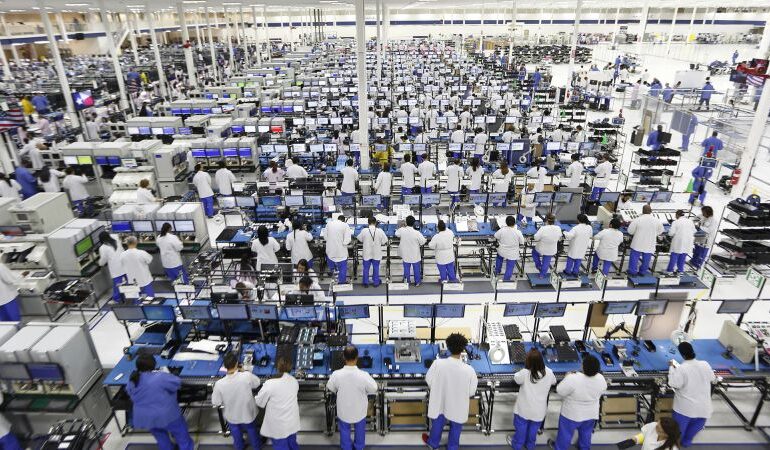Motorola’s Past Smartphone Venture Offers Lessons for Today

In 2013, Motorola attempted to capture a larger share of the smartphone market by promoting its products as “Made in the USA.” The company’s then-CEO, Dennis Woodside, noted that a segment of consumers favored domestically produced goods. However, despite initial enthusiasm, Motorola ceased production at its Texas factory just a year later. This early venture into domestic smartphone manufacturing provides important insights for companies considering similar paths today.
Motorola’s efforts came during a time when the smartphone market was heavily dominated by giants like Apple and Samsung. The Moto X, marketed as a customizable smartphone, was assembled in Fort Worth, Texas, allowing consumers to personalize features directly through Motorola’s website. The strategy aimed to appeal to American consumers’ desire for locally produced goods while offering unique customization options, which were not readily available with competing models.
Despite these efforts, the Moto X fell short of sales expectations, with only 500,000 units sold by the third quarter of 2013, according to analysis from Strategy Analytics. By May 2014, Motorola announced it would shut down the Texas facility, realizing the cost pressures and complexities of maintaining a domestic supply chain were too great. Woodside explained, “There definitely were higher costs, which was challenging, and you are dealing with a supply chain that’s very fragmented.”
The challenges of workforce availability and skill gaps are central to the difficulties faced by companies seeking to manufacture smartphones in the United States. Woodside emphasized the importance of having a strong value proposition to attract and retain skilled workers. He noted, “You have to be thoughtful about how you use automation and be really smart about all of the economics to make sure that you can be price competitive in the market.”
Workforce Challenges in U.S. Manufacturing
The labor market in the United States presents a significant hurdle for manufacturers. As Woodside observed, many potential employees have other job options, such as retail or food service, which can be more attractive than factory jobs. He compared the assembly process to a “super tiny Lego set,” indicating the precision required for assembling hundreds of small components. This specific nature of the work often necessitates extensive training for employees who may be unfamiliar with such tasks.
According to the U.S. Bureau of Labor Statistics, the manufacturing sector lost an estimated 11,000 jobs between June and July 2023, highlighting ongoing difficulties in the industry. While recent tariff policies have complicated job creation, a survey by the Cato Institute indicated that many Americans prefer their current jobs over factory work. Additionally, a report from the National Association of Manufacturers identified attracting and retaining quality workers as one of the top challenges faced by U.S. manufacturers.
In contrast, countries like China have seen a thriving manufacturing sector, with approximately 123 million people employed in manufacturing as of 2023. This workforce has enabled companies like Apple to maintain high production rates, exemplified by the Foxconn facility in Zhengzhou, where 350 iPhones were assembled per minute in 2016.
Global Manufacturing Shifts and Future Strategies
In response to geopolitical pressures and changing economic landscapes, companies are increasingly diversifying their manufacturing locations. Apple has begun shifting some of its production to countries like India and Vietnam. This strategy aims to reduce reliance on Chinese manufacturing while also addressing tariff implications, particularly as India has become the largest exporter of smartphones to the United States.
Woodside’s experience illustrates the complexities of domestic production in a globalized market. He warned companies looking to produce electronics in the U.S. to carefully evaluate their capacity to train a workforce equipped with the necessary skills. “Understanding the nature of the product you’re making and thinking about… ‘Are we going to have to completely train the workforce?’ That’s something we didn’t quite anticipate,” he said.
As the landscape of smartphone manufacturing continues to evolve, the lessons learned from Motorola’s venture a decade ago remain relevant. Companies must consider not only the economic implications but also the logistical challenges of assembling complex devices domestically. The ability to adapt to these challenges will be crucial for any organization aiming to succeed in the competitive smartphone market of the future.






